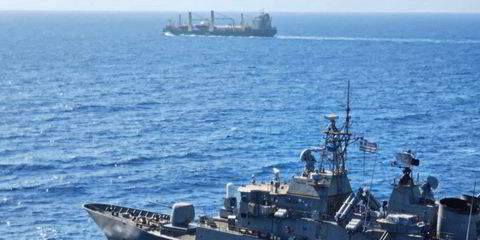Synthetic-LNG (S-LNG) is the holy grail in the transition from fossil LNG.
But S-LNG is not available yet.
A pilot project in Germany, where MAN Energy Solutions was working with domestic shipping company Wessels Marine to demonstrate its use in the 1,036-teu containership Wes Amelie (built 2011), collapsed after the vessel and production plant were separately sold.
Titan LNG’s Ronald van Selm says his company is working on a first project that should produce S-LNG from 2024, which it will be supplying to the market.
But larger-scale S-LNG production, like other e-fuels, must await the production and availability of green hydrogen, and Van Selm believes this will not materialise early this decade.
S-LNG is produced by generating electricity from low-carbon or renewable-energy sources to conduct electrolysis — splitting water into hydrogen and oxygen. CO2 is added, creating methane and water.
Bureau Veritas’ Rolf Stiefel says that as with bio-LNG, carbon-neutral S-LNG has the same molecules as fossil LNG and so, if it becomes available, can use the same infrastructure.
“There is absolutely no miracle in it,” he adds, but as with every e-fuel, it needs the hydrogen revolution to happen first.
Stiefel says there are many plans and pilot projects for S-LNG. He refers to a plan to build a 100MW electrolyser in Hamburg, although he describes it as “a drop on a hot stone”.
Green hydrogen is expensive, Van Selm admits, but it will make an efficient feedstock for e-fuels such as green ammonia, green methanol and S-LNG. The question will then be which to use it for.
S-LNG may prove the better option, he believes, as it has four times the energy density of hydrogen, there would be no need to adapt existing LNG-fuelled vessels and it is safer to handle than toxic alternatives such as ammonia.
“I can guarantee that a vessel ordered today can, in 20 years, run on synthetic LNG,” Van Selm says. “Technically there is no issue at all, it is just when do we price carbon emissions sufficiently high to make sure. But this carbon-neutral way of producing it makes sense.
“My guess would be that deepsea shipping will be the longest user because there is the largest installed base of LNG-fuelled vessels. I think it’s the safest bet at the moment.”




